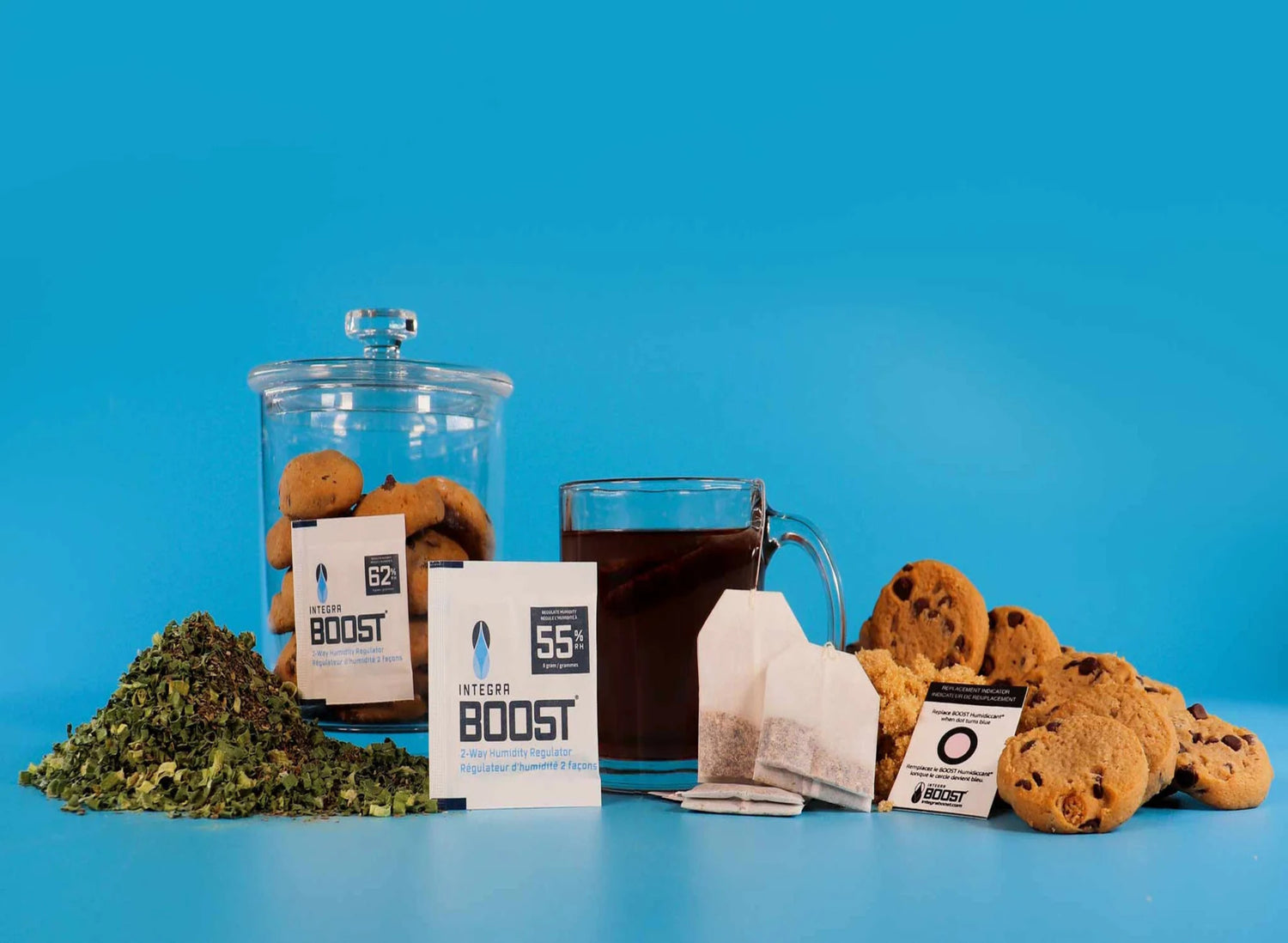Table of Contents
Are Integra Packs Safe for Contact with Food?
Humidity control is essential for preserving the freshness, flavor, and safety of many food products. As Integra Boost packs have gained popularity in the cannabis industry for maintaining optimal moisture levels, many consumers and businesses are now questioning whether these humidity control solutions are safe for direct contact with food products. This comprehensive guide examines the safety profile of Integra packs for food applications.
Integra Pack Composition and Food Safety Standards
Integra Boost packs contain a proprietary salt-free solution that regulates humidity through a semi-permeable membrane. Unlike some competing products, Integra packs are specifically designed to be salt-free and non-toxic, which is a significant factor in their safety profile for food applications.
The composition includes:
- Food-grade glycerin solution
- Purified water
- Non-toxic polymer materials
- Tear-resistant outer packaging
As detailed in this breakdown of Integra pack contents, the materials used are specifically selected to prevent contamination even in case of accidental rupture.
FDA Compliance and Regulatory Status
Integra Boost packs are manufactured to meet FDA standards for indirect food contact. This means they are produced in facilities that follow Good Manufacturing Practices (GMP) and use materials that have been evaluated for safety when used as intended.
Key regulatory considerations include:
- Compliance with FDA indirect food contact regulations
- Manufacturing in GMP-certified facilities
- Use of food-grade components
- Testing for leachable and extractable compounds
These standards ensure that when used properly, Integra packs present minimal risk of contaminating food products they might contact.
Direct Contact Considerations with Food Products
While Integra packs are designed to be safe, manufacturers generally recommend avoiding direct contact between the packs and food items. Instead, the optimal use involves placing the humidity pack near, but not touching, food products within a sealed container.
For food applications, consider:
- Using a barrier such as parchment paper between the pack and food
- Placing packs in a separate compartment within food storage containers
- Ensuring the outer membrane of the pack remains intact
When storing sensitive items like herbs or spices, proper placement of Integra packs helps maintain freshness without risking contamination.
Best Practices for Using Integra Packs with Food
To maximize safety when using Integra packs with food products, follow these best practices:
Proper Container Selection
Choose airtight, food-safe containers that provide adequate separation between the humidity pack and food items. Our child-resistant containers with secure lids offer an excellent solution for safely storing food items alongside humidity control packs while preventing accidental access by children.
Pack Size Selection
Select the appropriate size pack for your container volume. Using an oversized pack can lead to excessive moisture regulation that might affect food quality. This guide helps determine the right pack size for your specific container.
Monitoring and Replacement
Regularly check the condition of your Integra packs and replace them when they become firm or no longer pliable. Knowing when to replace packs ensures optimal performance and safety.
Alternative Uses and Applications Beyond Cannabis
While cannabis preservation remains the primary application for Integra packs, they have proven effective for various food-related uses:
- Preserving dried herbs and spices
- Maintaining brown sugar softness
- Preventing staleness in baked goods
- Protecting coffee beans from moisture fluctuations
- Preserving the texture of dried fruits
These creative applications demonstrate the versatility of Integra packs beyond their original intended use.
Safety Benefits and Long-Term Food Preservation
When used correctly, Integra packs offer several safety advantages for food storage:
First, by maintaining optimal humidity levels, they help prevent mold growth that could render food unsafe. As explained in this article on mold prevention, controlling moisture is crucial for food safety.
Second, the two-way humidity regulation prevents both excessive dryness and dampness, preserving food quality longer. This explanation of two-way regulation shows how Integra packs maintain ideal conditions.
Finally, unlike some preservation methods that use chemicals or additives, Integra packs work physically through moisture exchange, avoiding the introduction of preservatives into food.
For businesses in the food industry, incorporating humidity control into packaging can reduce waste and extend shelf life. This cost-saving analysis demonstrates the economic benefits alongside the safety advantages.
As with any food safety measure, consumers should follow manufacturer guidelines and use common sense when incorporating humidity control solutions into their food storage practices. With proper use, Integra packs can safely help maintain the quality and extend the shelf life of many food products.











Leave a comment
All comments are moderated before being published.
This site is protected by hCaptcha and the hCaptcha Privacy Policy and Terms of Service apply.